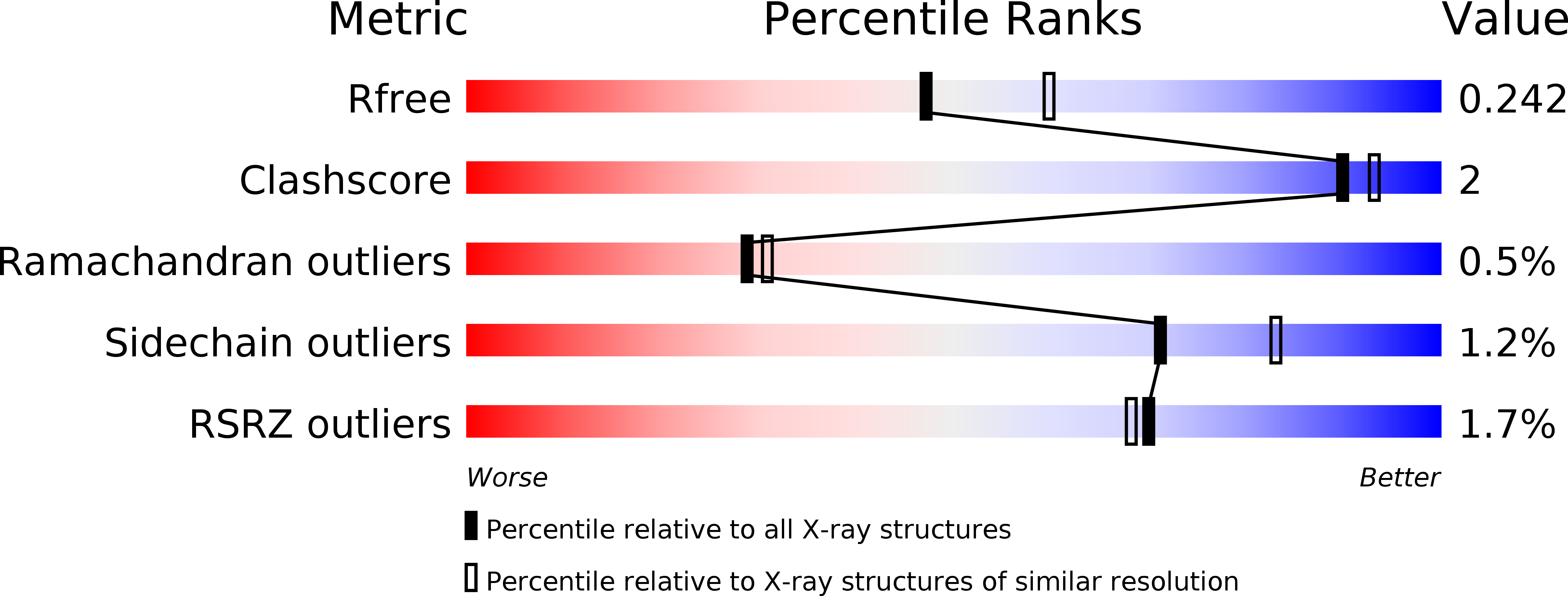An Alternative Active Site Architecture for O2Activation in the Ergothioneine Biosynthetic EgtB from Chloracidobacterium thermophilum.
Stampfli, A.R., Goncharenko, K.V., Meury, M., Dubey, B.N., Schirmer, T., Seebeck, F.P.(2019) J Am Chem Soc 141: 5275-5285
- PubMed: 30883103
- DOI: https://doi.org/10.1021/jacs.8b13023
- Primary Citation of Related Structures:
6QKI, 6QKJ - PubMed Abstract:
Sulfoxide synthases are nonheme iron enzymes that catalyze oxidative carbon-sulfur bond formation between cysteine derivatives and N-¦Á-trimethylhistidine as a key step in the biosynthesis of thiohistidines. The complex catalytic mechanism of this enzyme reaction has emerged as the controversial subject of several biochemical and computational studies. These studies all used the structure of the ¦Ă-glutamyl cysteine utilizing sulfoxide synthase, MthEgtB from Mycobacterium thermophilum (EC 1.14.99.50), as a structural basis. To provide an alternative model system, we have solved the crystal structure of CthEgtB from Chloracidobacterium thermophilum (EC 1.14.99.51) that utilizes cysteine as a sulfur donor. This structure reveals a completely different configuration of active site residues that are involved in oxygen binding and activation. Furthermore, comparison of the two EgtB structures enables a classification of all ergothioneine biosynthetic EgtBs into five subtypes, each characterized by unique active-site features. This active site diversity provides an excellent platform to examine the catalytic mechanism of sulfoxide synthases by comparative enzymology, but also raises the question as to why so many different solutions to the same biosynthetic problem have emerged.
Organizational Affiliation:
Department of Chemistry , University of Basel , Mattenstrasse 24a , Basel 4002 , Switzerland.


















